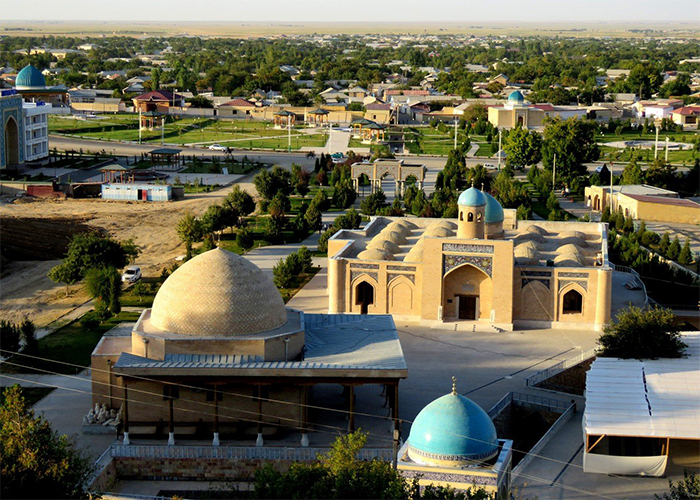NUROTA The Pamir-Alay mountains, located in the north of Samarkand-Bukhara, merge on the map. At an altitude of 2,169 m, the Nurato Mountains are increasingly becoming the center of Uzbekistan's growing ecotourism movement. It also has a medieval shrine. The city also serves as a transportation hub for camel riders (and also a place to spend the night from time to time). The local people believe that Nurata was founded in 327bc by Alexander as Nur. They believe that Alexander paved the way for water from the peak. This ancient city had a strategic position on the border between arable lands and steppes. Today, Nurata, home to 30,000 people and famous for its marble and fur production, maintains its position as a sacred place that attracts visitors from all over Central Asia. First of all, every tourist who visits Nurata will want to visit Alexander Fort. It is strategically located on a hill south of the city, and according to Uzbek sources, Alexander the Great instructed one of his generals to build a fortress to enter here while continuing to conquer Bactria and Sogdiana. When Alexander returned, his armies could neither break through the gates nor cross the walls, and so was the strength of the construction. Hazrat-i Ali, the father-in-law of Hazrat-i Muhammad, is said to have hit the ground with his staff here, and as the Spring of the Spring pushed forward, Nurata became even more important at the beginning of the Islamic era. 10th century Bukhara chronicler Muhammad Narshahi Nuratota people Prophet s.a.v. they said they had visited here. Therefore, this place has become an important regional pilgrimage center, with mosques, attractions, and a fountain adding to the splendor of the city. Under Alexander Castle, you can see a 16th-century mosque and a 9th-century mausoleum, and the pool next to them. It is said that this is the Spring of Spring, and it is said that the son-in-law of the Prophet Muhammad, Hazrat Ali, was here. Hundreds of sacred fish (they cannot be caught) swim in the water. Regardless of the time of year, the spring water stays at a temperature of 19.1 ° C. You can also learn more about local history and culture here through a small museum (opening hours 7 to 5). Nurata is famous for its old, round Suzanna and it can be sold for thousands of dollars at any international auction. In addition, suzani is one of the factors that attract tourists. History of the city According to legend, many thousands of years ago a fiery stone (probably a meteorite) fell from the sky and a healing spring of water appeared where it hit. By the way, the name of the place also depends on this legend. Nurata can be translated as "Father's Paradise" or "Father's Paradise". The Holy Fountain is one of the most important Islamic centers in the region. Thousands of believers from neighboring cities and other countries visit here every year. The complex consists of a Juma-masjid (Friday mosque), a dome, a bathhouse, hills, and an ancient castle, and a well with a holy spring. It is said that sometimes a strange light appears on the spring. Nurata Mountains To the south of Lake Aydarkul, you can walk in the mountains of the Nuratau-Kyzylkum Biosphere Reserve and watch the birds sing, which is unique in Uzbekistan. As part of a UNDP-sponsored “cultural tourism” project, families in several villages have turned their homes into rustic shelters. Families encourage guests to try a variety of local activities, traditional cooking, weaving, and craft classes, and it is also possible to breathe in the mountain air and sleep on a mat (tea bed). During the winter holidays, you can witness the kupkars. and you can also meet local ethnic Tajiks - it’s definitely a great opportunity.


